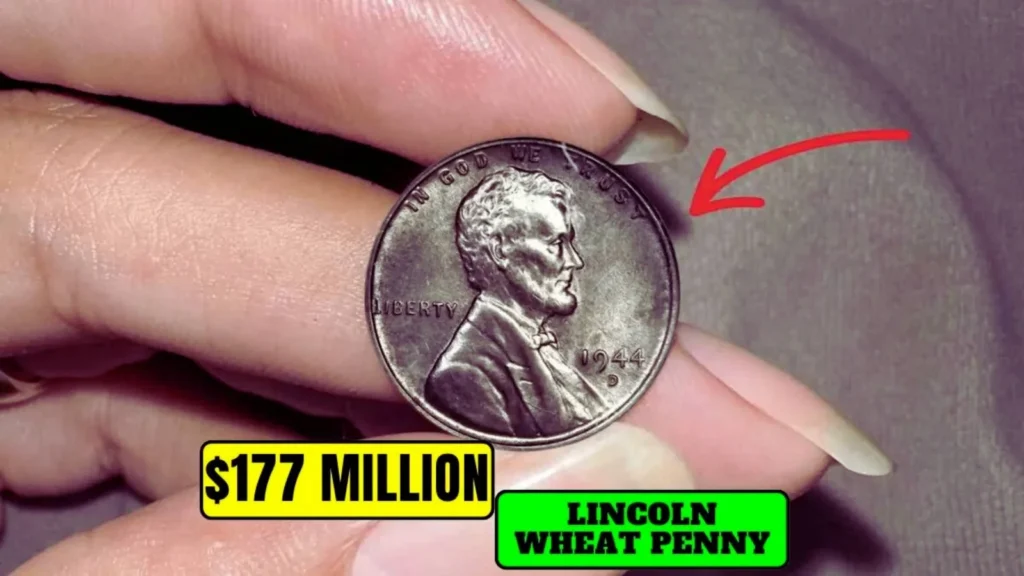The Lincoln Wheat Penny might look like your average one-cent piece, but hidden among billions of ordinary examples are rarities that could fetch a fortune—up to $177 million for the rarest errors, according to private sale reports. Minted from 1909 to 1958, these coins honor Abraham Lincoln with his profile on the front and golden wheat stalks on the back, symbolizing America’s agrarian roots. While most are worth mere pennies, wartime flubs and design quirks make some versions collector catnip. With a few still potentially circulating in pocket change or old jars, your next rummage could rewrite your financial future. Let’s dig into the history, the holy grails, and how to spot if you’ve struck copper gold.
A Brief History of the Lincoln Wheat Penny
Introduced in 1909 to mark Lincoln’s centennial, the Wheat Penny was the first U.S. coin to feature a real president’s likeness. Sculptor Victor David Brenner captured Honest Abe’s thoughtful gaze on the obverse, while the reverse’s wheat ears evoked abundance and the heartland. Over 25 billion were struck in bronze (95% copper) across Philadelphia, Denver, and San Francisco mints. But World War II changed everything: Copper shortages led to steel pennies in 1943, creating accidental treasures when bronze blanks snuck in. These errors, plus low-mintage years and die mishaps, turned everyday cents into numismatic legends. Today, they’re a gateway hobby for collectors, blending history with high-stakes hunting.

Why Some Wheat Pennies Are Worth a Fortune
Value soars for coins with scarcity, errors, or pristine condition—graded MS65+ by PCGS or NGC can multiply worth exponentially. The headline-grabber? A rumored private sale of an ultra-rare 1943 copper error for $177 million, though verified auctions top out around $1.7 million. Counterfeits plague the market, especially for the 1943 bronze, adding thrill (and risk) to the chase. These aren’t just coins; they’re time capsules of minting mayhem and American grit.
7 Notable Wheat Pennies and Their Values
From debut-year rarities to wartime wonders, here’s a spotlight on standout Wheat Pennies that could make you rich:
| Coin Variant | Key Feature | Estimated Value (USD) |
|---|---|---|
| 1909-S VDB | Designer’s initials on reverse; low mintage | $1,000–$150,000+ |
| 1914-D | Scarce Denver mintage | $500–$100,000+ |
| 1922 Plain | No mint mark (error) | $500–$50,000 |
| 1931-S | Low San Francisco production | $50–$10,000 |
| 1943 Bronze | Copper instead of steel (wartime error) | $100,000–$1.7 million |
| 1944 Steel | Steel instead of bronze (post-war error) | $10,000–$200,000 |
| 1955 Doubled Die | Doubled date and lettering | $1,000–$100,000+ |
The 1943 Bronze steals the show—fewer than 20 known examples across mints, with the Denver “D” version hitting record highs.
Shocking Facts About the Wheat Penny
- The 1943 copper is one of America’s most faked coins—crooks plate steel with bronze or alter dates from 1948.
- Over 25 billion minted, but errors like the 1955 Doubled Die (20,000–24,000 escaped) keep values volatile.
- A kid once found a 1943 bronze in his lunch money, netting six figures after grading.
How to Spot a Valuable Wheat Penny
Don’t spend that cent yet—grab a magnifier and follow these steps:
- Date Check: Focus on low-mintage years like 1909-S, 1914-D, or 1943 (copper?).
- Mint Mark Hunt: Under the date—”S” (San Francisco), “D” (Denver), or none (Philadelphia).
- Error Eye: Look for doubled elements (1955), wrong metal (1943 bronze: non-magnetic, reddish-brown), or missing marks.
- Condition Scan: Shiny, unworn surfaces? No scratches or corrosion—higher grades mean higher bids.
- Quick Test: Weigh it (3.11g for bronze) and magnet-check (steel sticks).
If it passes, rush to a dealer for a free appraisal—then certify with PCGS or NGC.
Expert Tips for Collectors
- Hunt Hotspots: Bank rolls ($0.50 for 50 pennies), yard sales, estate auctions, or inherited jars—circulation keeps dreams alive.
- Protect Your Prize: Use acid-free holders; never clean (it destroys luster and value).
- Grade and Sell: Certification costs $20–$50 but unlocks auctions like Heritage—expect 10–20% fees on sales.
- Start Small: Grab a Red Book guide for $15 to ID commons vs. contenders.
FAQs About the $177 Million Penny
- Is there really a Lincoln Wheat Penny worth $177 million? Reports point to a private ultra-rare error sale at that price, though public auctions cap at $1.7 million for verified 1943 bronzes.
- Could I still find one in circulation? Slim but possible—Wheat Pennies surface in change, rolls, or old collections yearly.
- What’s the easiest valuable Wheat Penny to spot? The 1955 Doubled Die—its obvious doubling on “LIBERTY” jumps out even to newbies.
- How do I know if it’s fake? Magnet test for 1943s; pros spot plating or alterations instantly.
- Other Wheat winners? Hunt the 1944 steel too—another WWII flip-flop worth $10K+.
The Lincoln Wheat Penny isn’t just history—it’s a high-stakes hide-and-seek where a single find could fund your dreams. That dusty jar on your shelf? It might hold more than memories. Snag your magnifier, hit the banks, and start scanning—who knows, your $177 million moment could be one flip away. For more coin capers, check PCGS.com or NGCcoin.com. Happy hunting!
